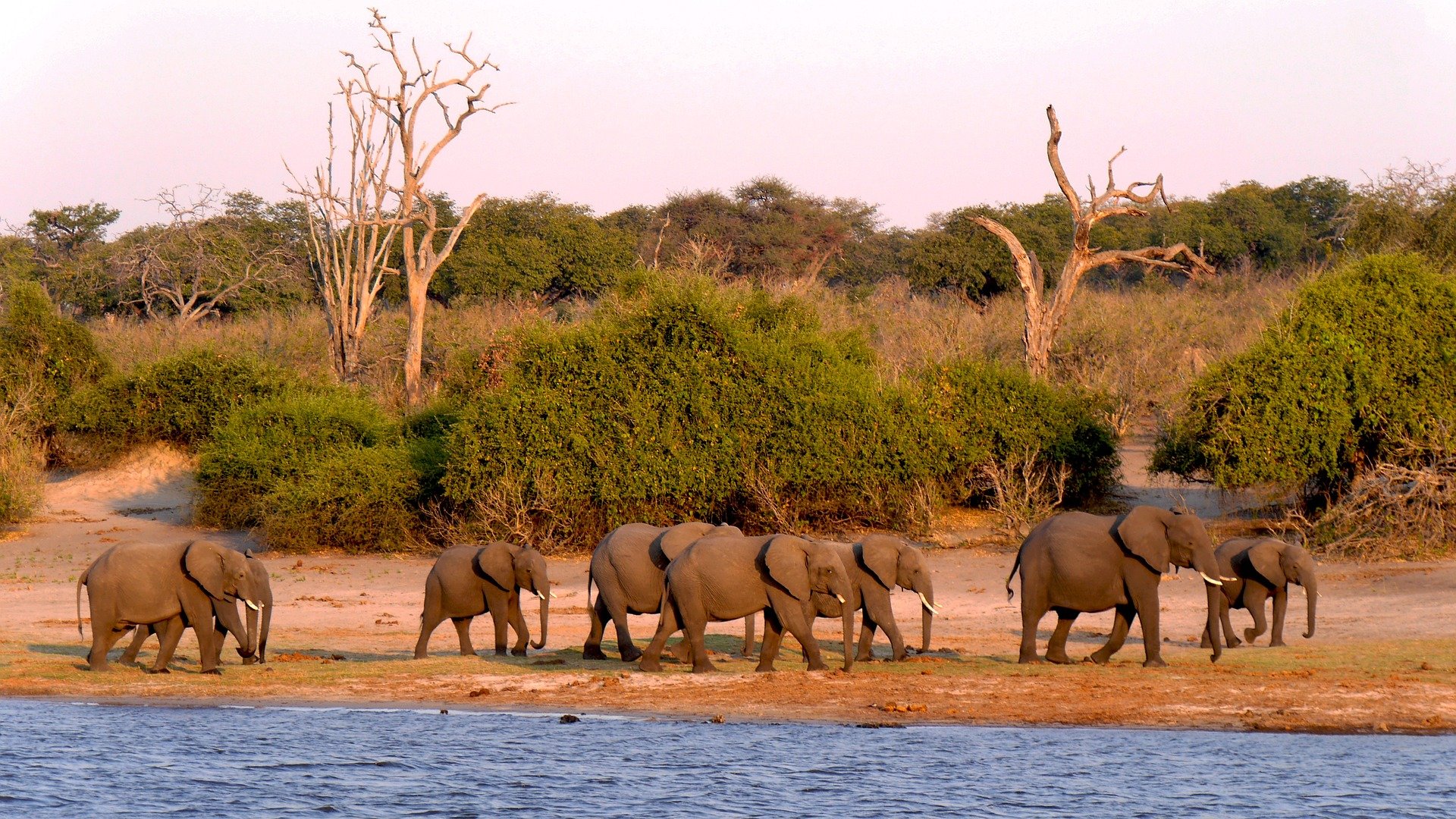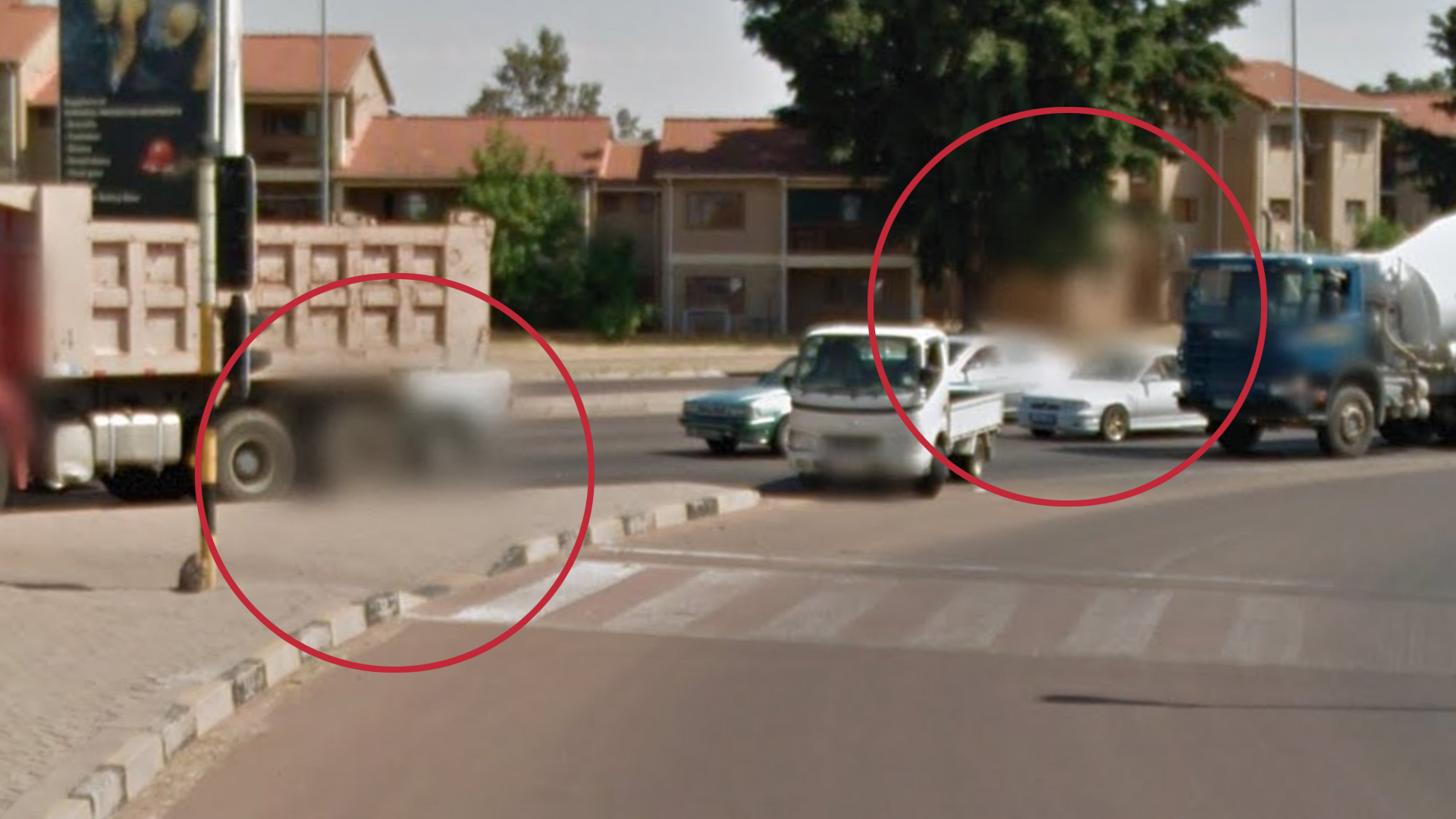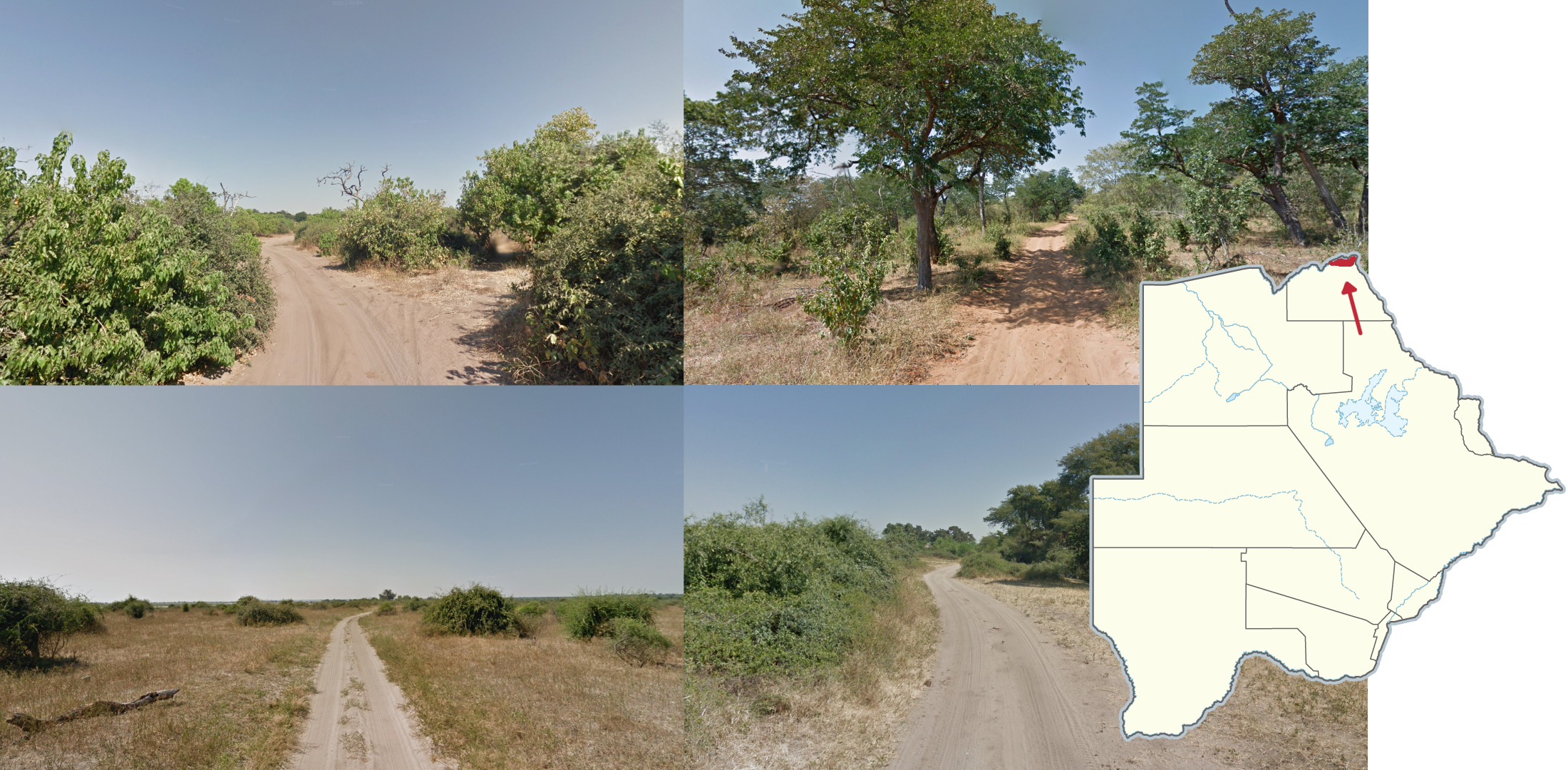
Botswana
Signs in Botswana are usually in English. Most town names, however, are derived from any of the indigenous languages spoken in the country.
NOTE: The Afrikaans language, which is closely related to Dutch and common in South Africa, is very rare in Botswana. You will almost never find Afrikaans place names.
The typical Botswana landscape is dry and mostly flat, though a limited amount of elevation can be found in certain regions. Common vegetation includes shrubs, small trees, and occasionally dry, golden grasslands. The soil is arid, sandy and ranges in colour from white to red.
NOTE: The border region of South Africa can have a similar landscape.
Botswana has many unique and distinct regions throughout the country. This image breaks down the main factors that differentiate each distinctive landscape by soil, vegetation and other clues.
You can click on the image to enlarge it.
RESOURCE: This image was made possible by the invaluable research done by Jasper Woodard. You can check out his Botswana videos on his YouTube channel.
Most of Botswana is as flat as a pancake. However, every now and then you will find some elevation. If you see hills, you are most likely in one of the two areas indicated on the minimap.
NOTE: Even in the indicated areas, there are a lot of very flat areas, as many of Botswana’s hills are geographically isolated. Some lone hills may also appear far outside the indicated areas.
The southeastern region near Gaborone has many semi-arid hills covered in short shrubs. If you see a lot of these, you are likely to be in the area between Gaborone and Lobatse.
NOTE: Similar hills can be found elsewhere in the country and across the border in South Africa. If you see a large quantity of them, and use other clues to rule out South Africa, you can be fairly certain that you are in southeastern Botswana.
The landscape in the eastern pocket north of Francistown is characterised by red soil and a somewhat arid look. The soil in these two areas often looks firm and rocky, rather than sandy or dusty. Trees and bushes with yellowed leaves and other “autumn” colours are common. Many trees are bare and withered. You might see fallen leaves on the ground here and there.
Gaborone is the capital and largest city. It tends to look richer and more developed than the rest of Botswana, though some neighbourhoods may still look impoverished. In some southern parts of the city hills can be seen, but most of the town is flat.
NOTE: The only other place in the country that often looks similar is Francistown.
In Francistown, you can often see a lone hill with radio antennas, which is located on the north side of the city. This hill is a good way to distinguish Francistown from Gaborone.
NOTE: The town of Serowe has a similar hill with antennas. Here, the towers are taller, red-and-white striped, and the hill has a flat top.
Salt pans can be found in central-eastern Botswana. Dirt road coverage can be found leading to the pans and has similar soil and grass, but you can also find many trees along the road. They are mainly found around the Nwetwe pan. The salt pans show up as lakes on the map.
NOTE: A lot of the dirt road coverage near the pans was taken in June, and will feature trees without leaves or those that are beginning to lose their leaves.
The mostly unpaved road north of Maun to Khwai can be identified by extremely white sandy soil and tall green trees surrounding the road. The first section of the road, between Maun and Shorobe, is paved. But that section can still be identified by the trees, faint road markings, and power lines to the west of the road.





































